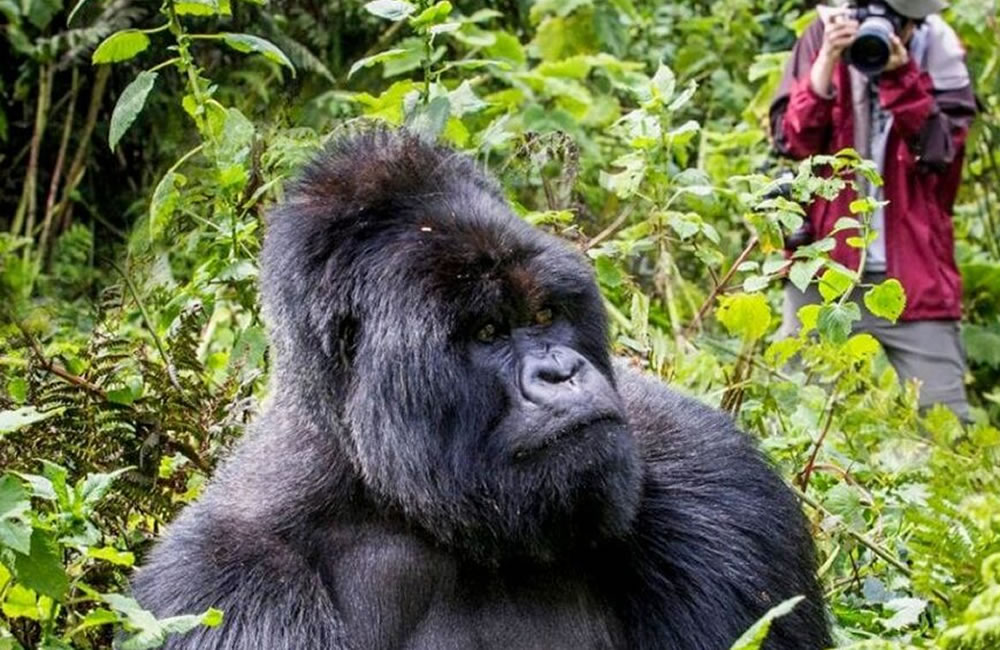For many, trekking the endangered mountain gorillas is the adventure of a lifetime. Each year, thousands of adventurers and primate enthusiasts shell out hundreds of dollars ($800 for Uganda and $1500 for Rwanda) for the privilege of getting up close and personal with the Giant Apes in their natural habitat. However, trekking the mountain gorillas isn’t for the faint-hearted and is a physically demanding activity, only requiring visitors to be at least 15 years old. So, why is gorilla trekking so expensive in World activities? And given the physical demands and restrictions of trekking these primates, should it cost as much as it does? Read on to find out why.
Mountain Gorillas are endangered.
One of the reasons why gorilla trekking is so expensive in World activities is because the Giant Apes are endangered, and one of the ways to protect them is by making the activity expensive. This means few people will afford to trek the mountain gorillas. Many visitors, especially primate lovers would be interested in getting up close and personal with these Great Apes but few will afford $800 or $1500 on gorilla permits alone (without including air tickets to/from the country of tracking, transport to the Park/s, accommodation for the duration of the gorilla safari, tips, and other logistics). Talking of being endangered, there are less than 2000 mountain gorillas left in the wild (as per the recent mountain gorilla statistics of 2018).
Safety and monitoring purposes
Mountain gorillas are endangered, and a lot of effort and financing has to be put in monitoring, to keep them healthy and safe in their natural habitat. Considering how vulnerable these creatures are, a team of gorilla doctors, Park Rangers, trackers, and researchers have to be employed to monitor and keep the Giant Apes safe, and a significant percentage of gorilla permit revenue is directed to this cause.
A huge percentage of these funds are used in remunerating these significant personnel, who monitor their well-being (health, feeding, and tracking their movement).
Also employed to monitor mountain gorillas are trackers, armed Park rangers, and Tourism Police who ensure their safety from external forces such as poachers and rebels. Your gorilla trekking adventures will be done in the company of armed Park rangers.
Conservation and sustainable gorilla tourism
Another reason why gorilla trekking is so expensive in World activities is because of conservation and sustainable gorilla tourism. In this case, Authorities (Uganda Wildlife Authority, Rwanda Development Board, or Institut Congolais pour la Conservation de la Nature) need funds to protect the thinking gorilla’s natural habitat for sustainable tourism.
This is aimed at ensuring these Giant Apes don’t go extinct so that the future generation can also get the chance to get up close and personal with these endangered creatures as they go about their day-to-day routines. With limited visitor numbers, there will be reduced pressure on them and their natural habitat hence not causing harm to their social life.
Improving community livelihood
Gorilla National Parks (Bwindi Impenetrable and Mgahinga National Parks in Uganda, Volcanoes National Park in Rwanda, and Virunga National Park in the Democratic Republic of Congo) are surrounded by communities, which depend on these Conservation Areas for shelter, Agriculture, food, and medicine before they were evicted to pave way for them to be gazetted into Parks.
However, with Uganda gorilla tours, revenue from permits is shared with communities to allow them to directly benefit from these activities. In so doing, their incomes increased, and infrastructures (schools, roads, Health facilities, and water/sanitization sources) were established.
Gorilla trekking is therefore so expensive in World activities to give back to the communities who support co-existence with mountain gorillas. This is because their altitude towards mountain gorillas and their protection is improved, as in the 1980s, poaching was at its peak.



